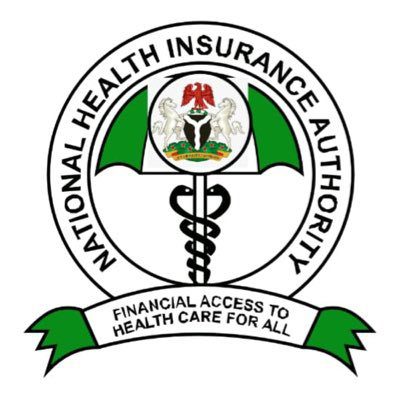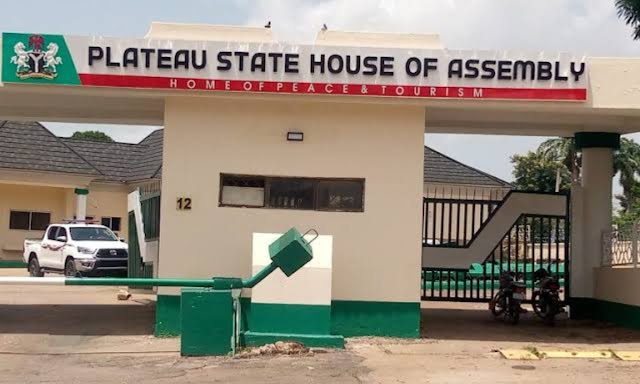In a landmark achievement for Nigeria’s healthcare sector, the National Health Insurance Authority (NHIA) has successfully enrolled over 20 million Nigerians in its health insurance scheme, a significant step toward achieving universal health coverage (UHC) by 2030. This milestone, announced in 2025, marks a 14% increase from the 16.7 million enrollees recorded in 2023 and surpasses a presidential target set for 2027. The NHIA’s efforts, led by Director-General Dr. Kelechi Ohiri, reflect a concerted push to expand access to affordable healthcare, address systemic challenges, and protect vulnerable populations from out-of-pocket medical expenses. This development has sparked optimism about Nigeria’s path to equitable healthcare, while also highlighting the challenges that lie ahead in sustaining and scaling this progress.
Background: Nigeria’s Healthcare Landscape
Nigeria, Africa’s most populous nation with over 230 million people, has long grappled with a fragmented healthcare system characterized by limited access, inadequate funding, and high out-of-pocket expenditures. According to the World Health Organization, over 70% of healthcare costs in Nigeria are borne by individuals, placing a significant financial burden on households, particularly the poor. This has led to disparities in healthcare access, with rural communities and vulnerable groups often unable to afford essential medical services.
The National Health Insurance Scheme (NHIS), established in 1999, was designed to address these challenges by providing a framework for affordable healthcare through risk pooling. Renamed the National Health Insurance Authority (NHIA) under the 2022 NHIA Act, the agency has undergone significant reforms to expand coverage, improve service delivery, and ensure financial protection for Nigerians. The NHIA’s mandate is to achieve UHC, ensuring that all citizens have access to quality healthcare without financial hardship, in line with the United Nations’ Sustainable Development Goals (SDGs).
The enrollment of over 20 million Nigerians in 2025 is a testament to the NHIA’s aggressive efforts to scale up its programs. This milestone, achieved ahead of the 2027 target set by President Bola Ahmed Tinubu’s administration, reflects a combination of policy reforms, strategic partnerships, and innovative interventions aimed at addressing Nigeria’s unique healthcare challenges.
The NHIA’s Achievement: Breaking Down the Numbers
The NHIA’s announcement, made public through various platforms including a forum in Lagos and a media briefing in Abuja, highlights a remarkable increase in health insurance enrollment. In 2023, the NHIA reported 16.7 million enrollees, a figure that grew to 19.2 million by late 2024, representing a 14% increase in less than a year. By June 2025, the agency had surpassed the 20 million mark, with an additional 800,000 beneficiaries registered under the Basic Health Care Provision Fund (BHCPF) in May 2025, bringing the total to 20.6 million.
Dr. Kelechi Ohiri, the NHIA’s Director-General, attributed this success to the collaborative efforts of state health insurance agencies, health maintenance organizations (HMOs), and the NHIA itself. Speaking through Mrs. Aisha Abubakar Haruna, Acting Director of the Lagos Regional Office, at the Nigerian Association of Insurance and Pension Editors’ annual general meeting, Ohiri noted that the agency had achieved 99% of the 2027 presidential target by mid-2025. “As of June last month, NHIA has achieved 20 million enrollees in health insurance. This was the combined efforts by the state health insurance agencies, health maintenance organizations, and the National Health Insurance Scheme,” he stated.
The BHCPF, a key component of the NHIA’s strategy, has played a critical role in this expansion. Launched to provide free healthcare to vulnerable populations, the fund has covered 2.4 million Nigerians, with an additional 2.6 million beneficiaries enrolled by May 2025. This initiative targets groups such as pregnant women, children under five, and the elderly, ensuring they have access to essential services without financial strain.
Expanding Coverage: New Initiatives and Reforms
The NHIA’s success is not solely about numbers but also about the quality and scope of coverage. The agency has introduced several reforms to enhance the value of health insurance for enrollees. One significant development is the inclusion of extreme health cases, such as tuberculosis (TB) and HIV/AIDS, in the insurance scheme. Pilot programs in four states have been launched to provide coverage for people living with HIV (PLHIV) and TB patients, addressing critical public health challenges. These initiatives aim to reduce stigma, improve access to treatment, and integrate these conditions into the broader healthcare framework.
Additionally, the NHIA has revised its benefit package to include unmet needs such as family planning, which is crucial in a country with high fertility rates and maternal mortality. The agency has also introduced programs targeting maternal and newborn health, such as the Comprehensive Emergency Obstetric and Newborn Care (CEMONC) program, designed to address the five leading causes of maternal mortality: hemorrhage, preeclampsia, sepsis, post-abortion complications, and obstructed labor. The NHIA Free Fistula Programme and partnerships with the Global Fund for HIV/AIDS and Drug-Resistant Tuberculosis further demonstrate the agency’s commitment to vulnerable groups.
To improve service delivery, the NHIA has implemented measures to address drug shortages and care delays. The introduction of a “One-Hour Referral Authorisation Code” ensures that enrollees receive timely referrals from primary to secondary healthcare facilities, reducing wait times and improving outcomes. The agency has also revised tariffs, increasing the capitation fee from N750 to N1,450 per registered life to align with current economic realities and ensure providers are adequately compensated.
Focus on Vulnerable Groups
A cornerstone of the NHIA’s strategy is its emphasis on equity, particularly for vulnerable populations. In 2025, the agency launched a program targeting women with obstetric complications, ensuring that financial constraints do not prevent access to life-saving care. Dr. Ohiri emphasized, “If a woman comes in with an obstetric complication and cannot afford care, we ensure that money is not a barrier. She will receive treatment, and NHIA will underwrite the cost.” This initiative also incorporates family planning services and ensures that discharged patients are enrolled in health insurance for future needs.
The NHIA has also prioritized pensioners and retirees, recognizing their healthcare needs as they age. By focusing on these groups, the agency aims to reduce the financial burden of medical expenses, which often consume a significant portion of retirees’ income alongside food costs. Partnerships with the National Primary Health Care Development Agency (NPHCDA) and memoranda of understanding (MOUs) with 11 health facilities, including four national obstetric fistula centers, have strengthened the NHIA’s ability to deliver on these commitments. Over 1,000 women with obstetric fistula have been treated under these programs, with costs verified and paid directly to hospitals.
Challenges and Criticisms
Despite these achievements, the NHIA faces significant challenges in sustaining and scaling its progress. With Nigeria’s population exceeding 230 million, the 20.6 million enrollees represent less than 10% of the population, far from the UHC target of 44 million by 2030. Limited awareness, logistical barriers in rural areas, and resistance to mandatory health insurance, as stipulated by the 2022 NHIA Act, remain hurdles. Dr. Ohiri acknowledged that enforcing the mandate requires a “whole-of-government approach,” indicating the complexity of achieving compliance.
Critics have also pointed to issues such as inconsistent service quality, delays in provider payments, and drug shortages in some facilities. While the NHIA has introduced measures to address these, such as revised accreditation standards and the NHIA Medicine Initiative for branded drugs, implementation gaps persist. Additionally, the economic climate in 2025, marked by inflation and rising costs, poses challenges for both enrollees and providers, necessitating further tariff adjustments to maintain affordability.
Socio-Economic Implications
The NHIA’s milestone has profound implications for Nigeria’s socio-economic landscape. By reducing out-of-pocket healthcare costs, the scheme alleviates financial stress on households, freeing up resources for education, nutrition, and other essentials. This is particularly significant for vulnerable groups, who are often pushed into poverty by medical expenses. The inclusion of conditions like TB and HIV/AIDS also contributes to public health goals, reducing disease burden and improving workforce productivity.
Moreover, the NHIA’s efforts align with President Tinubu’s Renewed Hope Agenda, which emphasizes equitable development and social welfare. The agency’s focus on maternal health, for instance, addresses Nigeria’s high maternal mortality rate (estimated at 814 per 100,000 live births by WHO), promoting healthier families and communities. The economic ripple effects of a healthier population include increased labor participation and reduced absenteeism, critical for a country aiming to boost its GDP growth.
The Road to Universal Health Coverage
The NHIA’s achievement is a critical step toward UHC, but the journey to 2030 remains ambitious. Dr. Ohiri has outlined plans to surpass the 20 million target in 2025, focusing on four key areas: increasing enrollment, improving maternal health, supporting elderly care, and leveraging digital transformation. The agency is investing in technology to enhance transparency and access, such as digital platforms for enrollment and claims processing.
Media partnerships are also central to the NHIA’s strategy, with Dr. Ohiri emphasizing the role of journalists in raising awareness. “We cannot do this alone. The media plays a critical role in educating Nigerians and holding us accountable,” he said. This approach recognizes the importance of public engagement in driving enrollment and ensuring the scheme’s sustainability.
Public and Media Reactions
The announcement has generated significant buzz on platforms like X, where Nigerians have praised the NHIA’s progress while calling for further expansion. One user reportedly wrote, “20 million is a start, but we need health insurance for all 230 million Nigerians to truly achieve UHC.” Others have highlighted the importance of rural outreach, with one post stating, “NHIA must focus on villages where people still sell their land to pay hospital bills.” These reactions underscore both the optimism and the urgency surrounding the NHIA’s work.
Media outlets, including Nigerian News Direct, have framed the milestone as a turning point for Nigeria’s healthcare system. The coverage reflects growing public interest in health insurance as a tool for social equity, with outlets like Legit.ng and Vanguard News providing detailed analyses of the NHIA’s reforms.
Conclusion
The NHIA’s enrollment of over 20 million Nigerians in its health insurance scheme is a historic achievement that signals progress toward universal health coverage. By surpassing the 2027 presidential target in 2025, the agency has demonstrated its commitment to transforming Nigeria’s healthcare landscape. Initiatives targeting vulnerable groups, tariff revisions, and expanded coverage for critical conditions like TB and HIV/AIDS highlight the NHIA’s holistic approach to reform.
However, challenges such as limited coverage, service quality, and economic pressures require sustained efforts and collaboration across government, private sector, and civil society. As Nigeria moves toward its 2030 UHC goal, the NHIA’s milestone serves as both a foundation and a call to action, urging stakeholders to build a healthcare system that leaves no one behind. With continued innovation and public support, Nigeria is poised to make significant strides in ensuring health for all.






